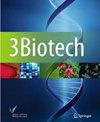A Predictive Approach for Evaluating Thermo-Physical Properties of Nano fluids Using Artificial Intelligence Algorithms
IF 2.9
4区 生物学
引用次数: 0
Abstract
Artificial Intelligence (AI) algorithms are increasingly being employed as substitutes for conventional methods or as components within integrated systems. They have demonstrated effectiveness in addressing complex applied problems across various domains, gaining popularity in the present context. AI approaches exhibit the ability to learn from patterns, tolerate faults by handling noisy data, and manage non-linear problems. Once trained, they excel in generalization and fast estimation. This survey presents a comprehensive review of AI algorithms developed for investigating nanofluid-related issues. In nanofluid research, the most commonly used neural network model is Multilayer perceptron neural network (MLP), while the Radial Basis Function Neural Network (RBF-ANN) is the preferred training method. the Generalized Regression Neural Networks (GRNNs) exhibit a simple structure that reduces learning time, making them particularly suitable for nanofluids modelling. Consequently, for nanofluids with a large number of samples, the use of RBF-ANN is recommended. The findings demonstrate the substantial potential of ANN methods as predictive and optimization tools for nanofluids. This paper highlights the recent researches done for evaluating thermo-physical properties of nanofluids using AI algorithms.基于人工智能算法的纳米流体热物性预测方法
人工智能(AI)算法越来越多地被用作传统方法的替代品或集成系统中的组件。它们在解决各种领域的复杂应用问题方面已经证明了有效性,在当前环境中越来越受欢迎。人工智能方法展示了从模式中学习的能力,通过处理噪声数据来容忍错误,以及管理非线性问题的能力。经过训练后,它们在泛化和快速估计方面表现出色。本研究综述了用于研究纳米流体相关问题的人工智能算法。在纳米流体研究中,最常用的神经网络模型是多层感知器神经网络(MLP),而径向基函数神经网络(RBF-ANN)是首选的训练方法。广义回归神经网络(GRNNs)结构简单,可以减少学习时间,因此特别适合纳米流体建模。因此,对于具有大量样品的纳米流体,推荐使用RBF-ANN。这些发现证明了人工神经网络方法作为纳米流体预测和优化工具的巨大潜力。本文重点介绍了近年来利用人工智能算法评价纳米流体热物性的研究进展。
本文章由计算机程序翻译,如有差异,请以英文原文为准。
求助全文
约1分钟内获得全文
求助全文
来源期刊

3 Biotech
BIOTECHNOLOGY & APPLIED MICROBIOLOGY-
自引率
0.00%
发文量
314
期刊介绍:
3 Biotech publishes the results of the latest research related to the study and application of biotechnology to:
- Medicine and Biomedical Sciences
- Agriculture
- The Environment
The focus on these three technology sectors recognizes that complete Biotechnology applications often require a combination of techniques. 3 Biotech not only presents the latest developments in biotechnology but also addresses the problems and benefits of integrating a variety of techniques for a particular application. 3 Biotech will appeal to scientists and engineers in both academia and industry focused on the safe and efficient application of Biotechnology to Medicine, Agriculture and the Environment.
 求助内容:
求助内容: 应助结果提醒方式:
应助结果提醒方式:


